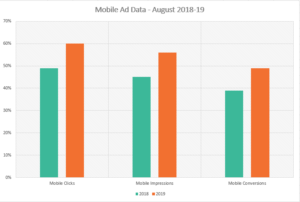We Are Ten! Celebrating a Decade of Innovative Digital Solutions
Onimod Global is officially 10 years old! We’re celebrating a decade of providing expert and innovative digital marketing solutions for our clients. Working with companies of all sizes, in many industries across the globe has given us the opportunity to develop and perfect many different digital marketing strategies.
We’re thankful for you, our wonderful clients, for putting your trust in our expertise, and allowing us to grow and perfect your marketing business goals year after year. With an innovative vision and a lot of hard work, Onimod Global quickly became one of the Midwest’s, America’s and the Globe’s fastest-growing digital marketing & SEO companies. Now spanning across six continents, our clients come to us – and stay with us – due to our proven business goal satisfaction rate and unique consultative approach.
Over the last 10 years we have learned a lot about the changing face of digital marketing, but these are our core digital strategies we wanted to share with you.
Our Core Digital Strategies:
SEO
Search Engine Optimization has always been our core attribute and the pillar of our digital marketing strategy. SEO has become vital in achieving long-term visibility for websites, especially with the continued expansion of new internet and search engine users. We’ve learned how to develop search engine optimization campaigns that drive organic traffic through increasing natural rankings across all major search engines, such as Google, Bing, and Yahoo. We accomplish this in a variety of ways. Some of our best practices include improving website crawlability and indexability, developing high quality content, and implementing proper metrics.
Crawlability describes the search engine’s ability to access and crawl content on a page. Indexability refers to the search engine’s ability to analyze and add a page to its index. While these two elements are not mutually exclusive, it is extremely beneficial to have both for a site. If there is an issue with either, it prohibits search engines from analyzing and adding pages to their indexes. This ultimately makes it more difficult for your site to come up in search results. Our strategy starts with making sure that is not the case. We make sure there are no dead or broken links and that a site’s robot.txt file is properly updated. Following fixing all technical issues we start focusing on content optimization. Rankings continue to improve when quality content is consistently added to the site. This includes practices such as dropping relevant keywords into appropriate site places, using video and images when possible, and blog sharing.
While these elements are extremely important, consistently measuring success is just as, if not more important. How will you know if your efforts are effective if you never check your progress? Measuring SEO success goes further than just tracking traffic and conversions. Time on page, pages per visit, bounce rate, scroll depth, and backlinks are all data points that give valuable insight to SEO performance.
SEM
Paid advertising across all search engines and social media platforms has become one of our specialties. Over our 10 years of SEM work we have become a trusted Google Partner, meaning we are a digital marketing company that is trusted by Google and excel with their products. We have learned to optimize our SEM strategy in a number of ways. A few of these include utilizing keywords and negative keywords, landing pages, and A/B testing all efforts.
Finding relevant keywords and correct match type is essential for any paid search campaign. Irrelevant or low search volume keywords can result in a low quality score, which can prevent your ads from getting shown in search results. Generally, we suggest using on optimization for conversion match type, but it can differ depending on the campaign’s objective. Finding effective keywords takes a lot of trial and error. You want to use as many words or phrases as possible that align with what users are actually searching for. The use of negative keywords is important as well. You don’t want your ads firing for searches that are completely irrelevant to your services. We consistently watch the searches our ads fire for, ensuring we don’t waste budget on something that will never turn into a real customer or lead.
Landing pages are something we suggest almost 100% of the time. Sending PPC traffic to a homepage can be a huge mistake. We believe that every search request is an opportunity and users are always looking for immediate solutions. If a user has already went as far as to click on your ad, make it easy as possible for them to actually convert. Sending them to your homepage means they will have to spend even more time searching through your site for what they actually want. If they don’t immediately find it, they’ll likely bounce and search elsewhere.
A/B testing is something that is widely underutilized when it comes to all aspects of websites and campaigns. You never really know how something is performing if it has nothing else to be compared to. We try to create different variations of ads and landing pages with various headings, keywords, body copy, placements, etc. To get clear results from tests it’s important to remember to only change one factor at a time and let it run long enough to gain accurate results.
Social
Mobile and social media have now established themselves as indispensable parts of the marketing mix. We utilize social media marketing to create social synergy for our clients. Social synergy is all about having visibility in the social spaces your consumers are searching, interacting, and engaging. The reason creating social positioning is so crucial is because it is now a great driver of leads and sales. An integrated social media platform can enhance marketing campaign effectiveness, help improve brand building across the enterprise, and make a real impact on sales and the bottom line. Integrated social capability brings another great benefit by keeping the enterprise updated with the latest innovations in social media. Sites such as Facebook and LinkedIn are constantly innovating and updating their collaboration tools, content-sharing formats, etc. With integrating social capability, customers don’t need to change business functions in sales or marketing to catch up with these changes.
We help our clients leverage the power of their content to elevate their audience and customer base in dramatic ways. This can be accomplished in a variety of ways. For content to be effective it must be consistent and high quality. We create and stick to monthly content calendars that guide our blog and post topics, which tags are used, where everything is shared, etc. Not only should the content you’re sharing be consistent, but it should have a purpose. Content should be based on questions potential customers might search for. The more direct and detailed the answer is, the better it will rank. It should also be actionable. Inform your audience about specific steps to take or resources they need to carry out the advice you’re giving. Content should always include a clear and a strong CTA, because the end goal is driving sales. In today’s much-hyped world of social media marketing, integrated social capability can make a direct and positive impact on the business.
What We Do Best
We have a lot of digital strategies and solutions, expanding further than just SEO, SEM, and Social. But what we really do best is being our clients’ true marketing partner. Onimod Global can power entire corporate marketing departments or simply provide custom solutions for local businesses. We’re here for our clients 24 hours a day and live for the moment they’re in a pinch and need our help. We excel in customer service and serving as our clients consultative marketing team, delivering custom digital solutions client by client.
Again, thank you to all our clients over the last 10 years, as without you, we would not be where we are today.
More from Onimod Global
Learn more about what we do, take a look at some of our work, or become a client today!


